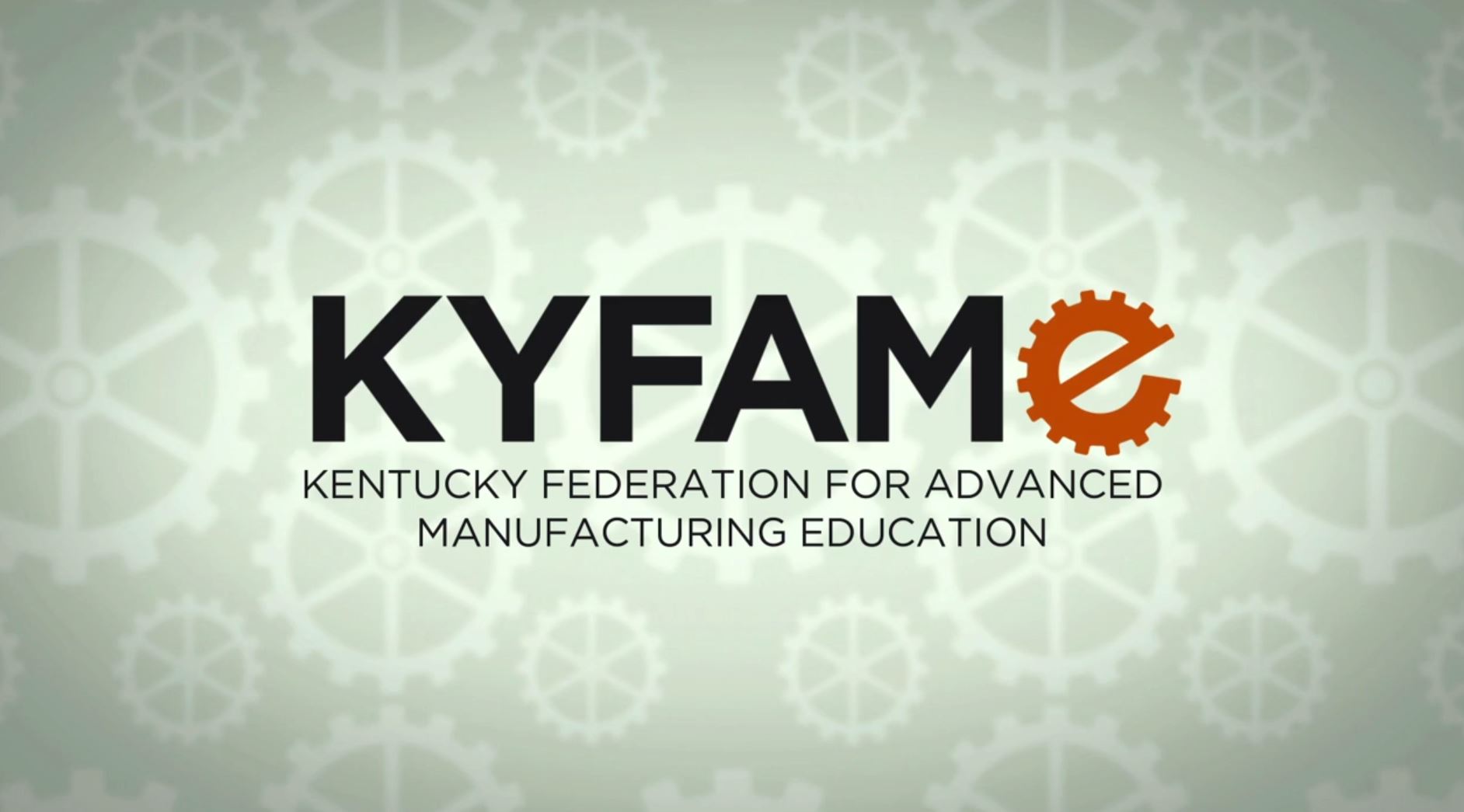
About a decade ago, a handful of central Kentucky manufacturing companies banded together to begin addressing a critical challenge.
As the state’s manufacturers battled to stay globally competitive, evolving cultural and demographic forces conspired to make finding skilled workers more difficult.
A generation of Americans who had learned the trades and created prosperous lives for themselves and their families were reaching retirement age, and subsequent generations, much smaller in number, no longer saw manufacturing as a viable career.
Thus, KY FAME — short for Kentucky Federation for Advanced Manufacturing Education — was born. Based on a model developed by the national FAME organization, the program is simple: Employers collaborate with postsecondary educational institutions to grow their own talent. KY FAME began modestly in 2008 on Bluegrass Community and Technical College’s (BCTC) Georgetown campus. In conjunction with BCTC, the employer group developed a program through which employees would be paid to attend school to earn associate degrees in advanced manufacturing technology (AMT). AMT addresses the largest current skill need in manufacturing, multiskilled maintenance.
In 2015, KY FAME became a statewide partnership, with more than 200 member companies, and efforts are underway to expand beyond the AMT program.
“For four or five years, there were 10 to 15 companies, and then other communities and companies began hearing about it,” said Josh Benton, executive director of workforce development for the Kentucky Cabinet for Economic Development. “It’s grown organically, from one chapter to six, and we’re now at 10. We’ve gone from growth mode to operational mode and sustainment. We’re now looking at other needs.”
The Students
KY FAME students fit several profiles. Some have just finished high school, while others tried college but dropped out with a fair amount of student loan debt.
Others, like Adam Spalding, have already worked for several years.
After graduating from Northeast High School in Clarksville, Tenn., Spalding was accepted at the University of Memphis and ultimately had his sights set on law school. But fate intervened, and he accepted a position with Bridgestone Corp.
Spalding eventually landed a coveted operator job at Logan Aluminum in Russellville, but he wanted more for himself and applied for admission to the company’s longstanding apprenticeship program. Logan was just migrating that program to AMT, and last year, Spalding became one of the company’s first six participants. His week consists of two full class days and one study day, plus two full days working with Logan mentors to apply classroom training on the job.
While Spalding, 35, was determined to advance his career at Logan, attending school while working full-time and supporting a family seemed impossible.
“You may drive an hour to Bowling Green for class at 9 in the morning, and your next class is at 3 in the afternoon,” he said. “That’s not efficient.”
FAME’s model, however, makes it feasible for individuals to work and go to school at the same time. One thing that makes KY FAME effective, said Logan Human Resources Manager Stacey Johnson Hughes, is that it creates a self-contained universe. FAME students are grouped in a cohort, meaning they go through the five-semester program together with a schedule tailored to them. They study technical subjects, such as electronics, welding, pneumatics and hydraulics, and general subjects, like English, math and physics. Soft skills also are addressed, such as punctuality, work ethic and getting along with others. Safety is also a primary focus.
Employers have flexibility to design their own programs. Students must attend school two days a week and work at least three days a week. The minimum hourly wage is $12, though some companies pay more. Logan participants, for example, earn $26 per hour in year one, $27.38 in year two and $28.76 upon graduation while gaining on-the-job training. Companies also have various ways of covering tuition.
Looking Ahead
Benton believes KY FAME is coming into its own. To date, 232 students have earned AMT degrees, and this fall, more than 650 students will be enrolled in KY FAME-endorsed programs. Graduation rates have been impressive as well. Of the 121 students who enrolled in August 2015, 108 graduated in May, a rate of more than 89 percent. By comparison, the national on- time graduation rate for two-year colleges runs at 5 percent.
KY FAME is also expanding its scope.
For example, the Owensboro chapter has developed a computerized manufacturing and machining program. The Bluegrass chapter is running two pilot programs through which AMT graduates can earn manufacturing-focused bachelor’s degrees in business and engineering.
Hughes, who was president of the Southcentral KY FAME chapter before she became the statewide board chair earlier this year, expects the FAME concept to migrate to sectors such as healthcare, banking and information technology.
And while KY FAME is not a silver bullet for manufacturing, she said it’s a highly effective approach.
“The most important thing is that it’s industry-led. It doesn’t come from the outside,” she said. “We’re bound together to help our communities, to help our companies, and help people get into good jobs and get a good education. We partner with our community and technical colleges and work together rather than in isolation, and we talk about things — not just maintenance programs but other challenges in our industry. It’s just a wonderful idea.”
Article by Cary Stemle | Autovision Magazine

